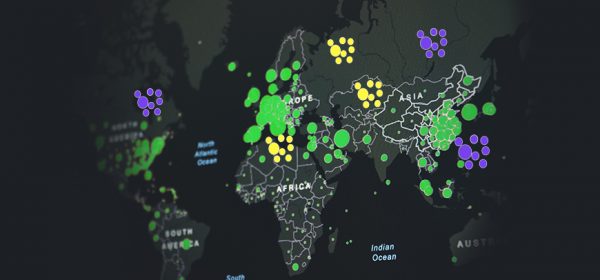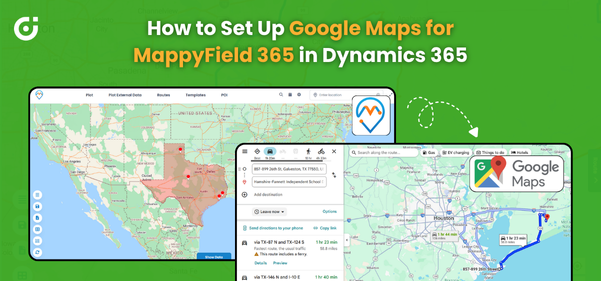Territory management saves every organization time, resources, and most importantly, enables them to cover more ground with fewer resources. The only way territory management becomes effective and garners the results you want is with proper organization and effective communication of all the developments within the sales team as well as other involved functional teams.
Apart from these two points, there are other things to take care of as well and hence this blog.
First, we’ll start with understanding what is sales territory management.
What is Sales Territory Management?
Theoretically, Sales territories are geographical areas assigned to a particular team/sales reps to work on and the management of that particular territory or territories can be defined as sales territory management. The territories are divided based on the product you want to sell, the potential of the territory, target audience, industry, etc. It sounds as simple as drawing a circle on a blank canvas but the effectiveness lies in perfecting the shape of that circle.
The most important aspect of creating territories is to be able to define and bifurcate sales targets as well as customers properly among the sales reps/team. The idea of creating and assigning territories might seem like a cakewalk but there’s a lot more going on in the background that needs to be properly taken care of.
Rather than creating territories on a whim, create territories based on certain criteria. Ideally that criteria should be a Venn diagram of what has previously worked in the territory and what are the possibilities of improvement. Other things you can consider are performance, the number of clients, bifurcation of resources for territories based on the number of clients in those territories, the potential of the territory, and more.

Once you create those, comes the next step of matching the right team member to the territories. Some of the things to keep in mind for that are:
– Geographical proximity: This is a primary requirement. Your head of the territory should be able to access their region as easily as possible. It is cheaper for your company because it saves you a lot of money in transport and hotel costs. And the more local a sales head is, the more they are able to leverage that to their advantage. Local connections with the city or state help get venues, data, and even trust of the local community. To customers, it is a local person representing them in a company. That goes a long way in getting people to use that product.
– Matching potential: A particular region may be promising, but a salesperson, in spite of being local and everything personally handled smaller sections before might not be up for it. And by smaller, I mean financially, and target based.
For example, if a customer wants to open a chain of restaurants in west coast states, someone who has work experience in Texas might not be able to pitch them designs for it. However, someone with experience of restaurant design in California or Oregon will be able to handle the sales pitch much more effectively. They are more tuned into the younger crowd’s approach and lifestyle.
– Language fluency: Following in the footsteps of the previous example, each region boasts of different languages that are not English. Not only the literal language, but there is also a cultural aspect of language that changes based on places. If you are handling New York or California, you are likely to have clients from everywhere in the world. If the sales manager is able to step into their shoes language wise and see where they come from, they will be able to build a strategy that works to win more clients.
– Past track record: As the above points point out, a track record of getting through to the right customers and maintaining a growing relationship with them is a winning factor in matching the territory manager and team to the territory.
After creating and assigning these territories, it’s time to get the most out of them. For that, follow these best practices:
Sales Territory Management Best Practices
Have an organized system
Proper planning will win you the most elaborate and tough battles. The same goes for sales territory management. Always have a quarterly plan as well as targets and then divide it into monthly or weekly plans to suit your and your team’s working methods. When we say organized system, we mean being organized in regards to territory creation, team creation, call rotations, follow up processes, sales pitches, along with the offers and discounts system.
Having an organized system for every stage of your customer cycle defined according to the territories and customers will not only help you cover more clients but also close more deals.
Plan weekly visits

Products are in varied forms. Each product is made by too many people, and thankfully, the competition is fierce. However, you can still get your customer if you give a little more to them. Right now, the experience is everything. A weekly visit from your sales team will go a long way to maintain that experience. You can use these visits to plan long term experience strategies as well. This gives you more room to show off your product and assure the clients that they will be looked after.
Monthly analysis of sales targets and territory performance
Each week something new might crop up in how your target market responds. Take those changes into account. And respond to it. When working from home began, the tech industry’s most popular product became the webcam. Similarly, there are often changes in what the audience demands and responds to, and this change has regional factors in place. Tune your sales strategies periodically to stay on top of that demand and even go so far as to predict it.
Take advantage of seasonal trends
The victory lies in understanding when it’s the right time to contact a particular prospect and knowing seasonal trends of your industry can help you with it. You can understand the trends by studying past data. If you don’t have any past data to rely on then you can create multiple strategies and implement them on a trial and error basis and learn what actually works for you.
For example:
If you are selling computers and laptops, then you can run ‘Back to School’ offers from July – September or June – August based on a particular territory’s school reopening dates. And then your on-field team for installation and maintenance can schedule their visitations accordingly.
Consider your conversion cycles

A lot of efforts go into finalizing a particular territory and then assigning the right resources for the same. So it is better to give the teams at least 3-6 months to adjust to the territories for you to make any decisions regarding reassigning or rearranging territories. Moreover, it is plausible that your conversion cycles might be more than 60 days. So you would want to consider that while analyzing the performance of territories.
Taking this into consideration will help you make informed decisions that you can rely on.
These were some of the points to help you get started with understanding sales territory management and its best practices. What might work for us might not work for you. The main thing is to be innovative and keep on analyzing and evolving your strategies.
Writer’s Note: This piece of writing is in collaboration with Roma Amarnani.
All product and company names are trademarks™, registered® or copyright© trademarks of their respective holders. Use of them does not imply any affiliation with or endorsement by them.





